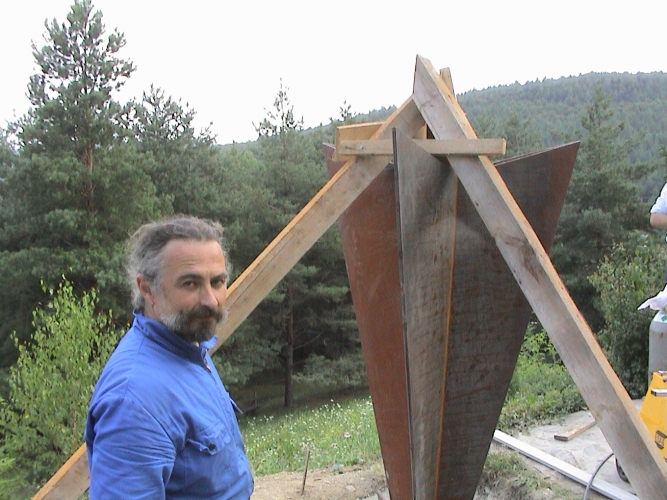
Building the Aro Lineage monumental phurba
The trial run of setting the blades into the base
Whilst the welding team was working on preparing the blades, three apprentices prepared a huge wooden tripod and basic scaffolding for setting up the blades the first time. Nine apprentices had to carry the blades from the forge house to the construction site.
When the blades (with the steel sheath sitting on the phurba) were set up for the first time, the phurba’s point engaged into the steel tube’s open end, sticking out 3 inches into the concrete base. The tripod building team now joined three props, which were immediately nailed together and fixed into position to form a secure support for the blades.
For the first time one part of the phurba was standing – and it was an impressive sight for everyone who had worked so hard to reach this point. The inclination of the blades was carefully checked and the steel sheath adjusted accordingly, as the sheath’s top edge was later to become level with the top surface of the phurba base. Then the steel sheath was welded onto the central base steel tube. The ‘reinforcement basket’ (which would form the core of the phurba base) started to take shape as a dozen or more of 2 feet long, ½ inch thick, steel rods were welded onto the steel sheath.
Ngak’chang Rinpoche and Khandro Déchen finally advised on the orientation of the phurba’s blades, and they were turned accordingly. The very top corners of the ‘edge reference points’ were plumbed on to the concrete base’s surface to set up a first orientation of the triangular stance.
The next step was the laying the concrete base so the blades had to be removed. All hands were needed to dismantle the wooden tripod, to remove the blades from their sheath, and to bring the blades back to the forge house, where steel work continued.
